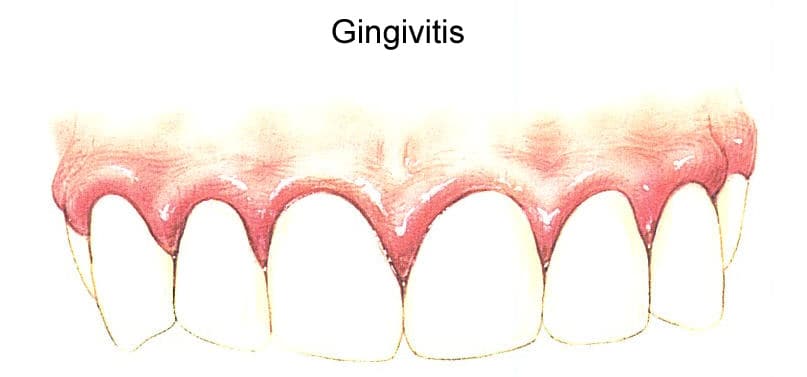
There are three main symptoms of gingivitis. The first one of these symptoms is going to be trench mouth. Most of the time, this is going to mean that your gums are bleeding or starting to swell. You might also have some very bad breath and pain in your gums. This means that your gums are going to appear to have a gray color to them. The pointed part of your gums that is in between the teeth will become flat, which is going to accommodate more to the dead tissue inside of the gums.
The second one of these symptoms of gingivitis is the recession of the gums or loose teeth. The longer that you have gingivitis, the more that your gums are going to recede. Therefore, they are no longer going to be able to support the bone structure that you are going to need for your teeth to stay in your mouth. This means that you might end up having to get dentures but they might need to be fitted several times for your mouth. This could also change the way that your teeth are going to fit together when you are biting or chewing your food.
The third one of these symptoms of gingivitis are abscesses. Basically, this is going to be a deepening between the periodontal pockets inside of your gums. Most of the time, this is going to happen because tartar or food particles are going to block the bone, which is going to kill your white blood cells. These white blood cells are what is going to help you to fight infection inside of your body. Therefore, when you get pus in your gums, you are going to have an abscess. They can destroy your teeth and the tissues in your gums.
There are a few different remedies that you could do at home to treat gingivitis. The first treatment is to make sure that your brush your teeth at least twice a day. You are going to need to use a toothbrush with soft bristles and a toothpaste with fluoride. The best times to do this is in the morning when you wake up and right before you go to bed. You will need to replace your toothbrush every three months because an old toothbrush is not going to clean your teeth properly.
The second treatment for gingivitis is that you make sure that you are flossing every day. Therefore, you are going to need to do it more than just when you have something in your teeth. Flossing is going to help to remove any buildup of plaque that your toothbrush was not able to get. You could also use an interdental cleaner if you do not like to floss but it is very important to ask your dentist how to use them so there is no damage to your gums.
The third treatment for gingivitis is to make sure that you are visiting your dentist every 6 months for an oral exam and cleaning. This is so that if you have any tartar on your teeth, the dentist can remove it immediately. But you will need to talk to your dentist to see if you need to visit him more often.
The fourth treatment for gingivitis is to rinse your mouth out with an antimicrobial rinse. This could reduce the severity of your gingivitis. It also helps to decrease the amount of bad breath that you have along with any plaque on your teeth. Therefore, you will need to look for a rinse with an ADA seal.